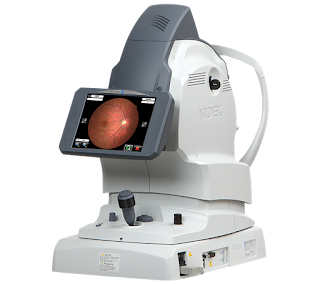Navigating the Future of Ophthalmic Equipment Sales: Trends and Opportunities
In the rapidly evolving field of healthcare, ophthalmic equipment sales play a pivotal role in ensuring the delivery of high-quality eye care. As technology continues to advance, the demand for cutting-edge ophthalmic devices is on the rise. This article explores the current landscape of ophthalmic equipment sales, highlighting key trends and opportunities that shape the industry.
Advancements in Technology:
The ophthalmic equipment market
has witnessed a paradigm shift with the integration of advanced technologies.
Innovations such as optical coherence tomography (OCT), digital fundus cameras,
and laser technologies have revolutionized diagnostic and treatment procedures.
Ophthalmic equipment sales are
increasingly driven by the demand for devices that enhance accuracy,
efficiency, and patient outcomes.
Teleophthalmology's Impact:
The emergence of
teleophthalmology has created new avenues for ophthalmic equipment sales.
Remote consultations and virtual monitoring have become essential components of
eye care delivery. Ophthalmic devices that support telemedicine, such as
portable retinal cameras and home-based monitoring tools, are gaining
prominence. This shift towards teleophthalmology not only expands the reach of
eye care services but also opens up opportunities for equipment manufacturers
to develop innovative solutions.
Rising Demand for Surgical Equipment:
As surgical interventions for eye
conditions become more sophisticated, there is a growing demand for
state-of-the-art surgical ophthalmic equipment. Advances in microsurgery techniques,
such as laser-assisted cataract surgery and minimally invasive glaucoma
surgery, are driving the need for precision instruments. Ophthalmic equipment
sales in the surgical segment are expected to surge as healthcare providers
invest in upgrading their capabilities to offer the latest in surgical
procedures.
Focus on Accessibility and Affordability:
Accessibility to eye care is a
global concern, and ophthalmic equipment sales are
increasingly influenced by the need for affordable solutions. Manufacturers are
developing cost-effective devices without compromising on quality to cater to
diverse healthcare settings. This trend is particularly crucial in addressing
eye health disparities, both in developed and developing regions.
Integration of Artificial Intelligence (AI):
Artificial intelligence is making
significant inroads into ophthalmic equipment, offering intelligent diagnostic
capabilities and predictive analytics. AI-powered devices assist in early
detection of eye diseases, enabling timely intervention and treatment.
Ophthalmic equipment sales are witnessing a surge in demand for AI-integrated
devices that enhance diagnostic accuracy and support personalized treatment
plans.
Opportunities in Emerging Markets:
The global ophthalmic equipment
market presents exciting opportunities in emerging economies. As healthcare
infrastructure develops, there is a growing need for modern ophthalmic devices.
Manufacturers who strategically position themselves in these markets stand to
benefit from the expanding customer base and increasing healthcare investments.
Sum up,
The landscape of ophthalmic equipment sales is dynamic,
with technology, telemedicine, surgical advancements, affordability, and AI
shaping the industry's trajectory. Manufacturers and healthcare providers alike
must stay abreast of these trends to navigate the future successfully. The
synergy between technological innovation and the evolving needs of eye care
professionals and patients will continue to drive the growth of ophthalmic
equipment sales in the years to come.




Comments
Post a Comment